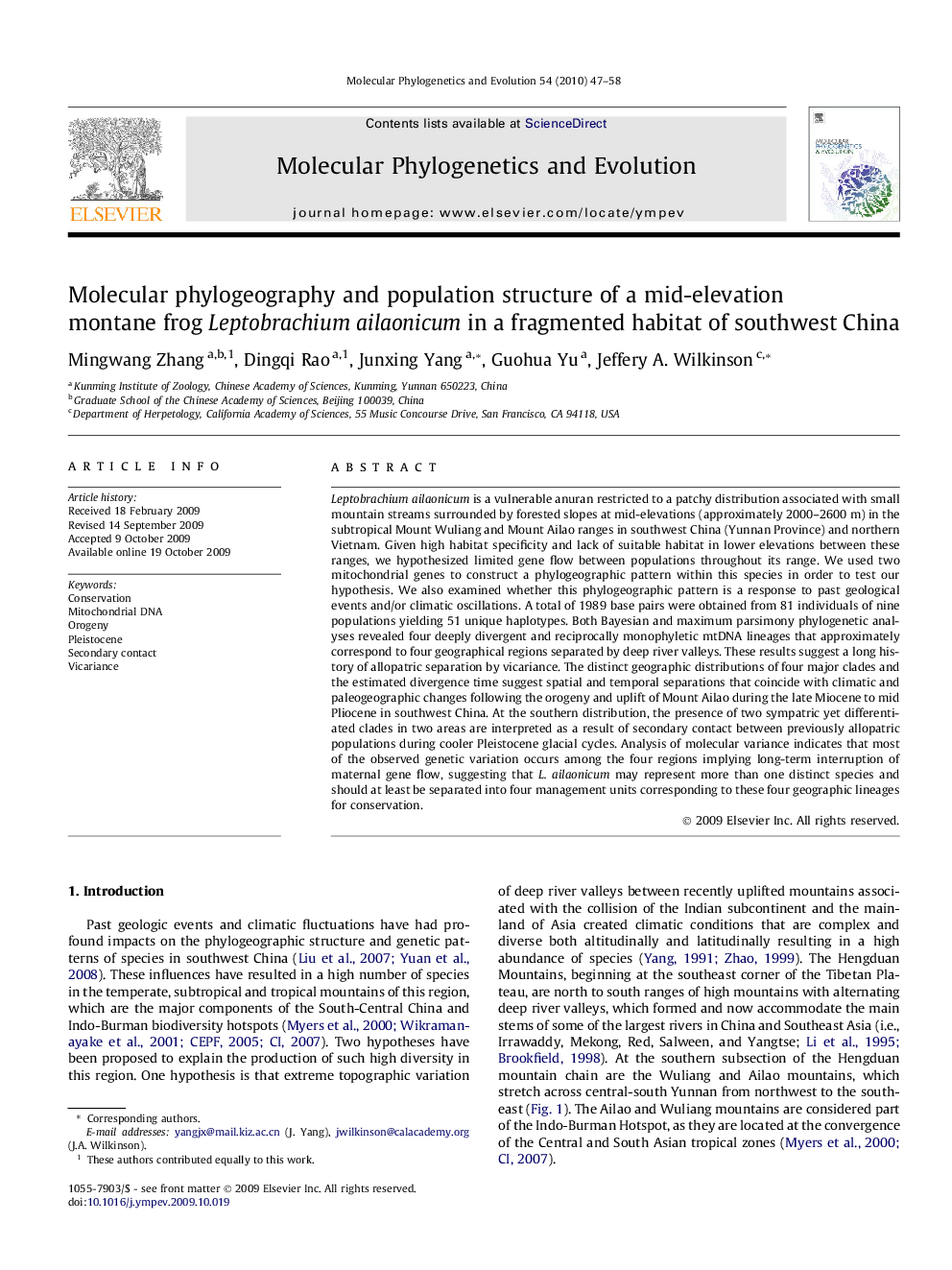| کد مقاله | کد نشریه | سال انتشار | مقاله انگلیسی | نسخه تمام متن |
|---|---|---|---|---|
| 2834721 | 1164321 | 2010 | 12 صفحه PDF | دانلود رایگان |

Leptobrachium ailaonicum is a vulnerable anuran restricted to a patchy distribution associated with small mountain streams surrounded by forested slopes at mid-elevations (approximately 2000–2600 m) in the subtropical Mount Wuliang and Mount Ailao ranges in southwest China (Yunnan Province) and northern Vietnam. Given high habitat specificity and lack of suitable habitat in lower elevations between these ranges, we hypothesized limited gene flow between populations throughout its range. We used two mitochondrial genes to construct a phylogeographic pattern within this species in order to test our hypothesis. We also examined whether this phylogeographic pattern is a response to past geological events and/or climatic oscillations. A total of 1989 base pairs were obtained from 81 individuals of nine populations yielding 51 unique haplotypes. Both Bayesian and maximum parsimony phylogenetic analyses revealed four deeply divergent and reciprocally monophyletic mtDNA lineages that approximately correspond to four geographical regions separated by deep river valleys. These results suggest a long history of allopatric separation by vicariance. The distinct geographic distributions of four major clades and the estimated divergence time suggest spatial and temporal separations that coincide with climatic and paleogeographic changes following the orogeny and uplift of Mount Ailao during the late Miocene to mid Pliocene in southwest China. At the southern distribution, the presence of two sympatric yet differentiated clades in two areas are interpreted as a result of secondary contact between previously allopatric populations during cooler Pleistocene glacial cycles. Analysis of molecular variance indicates that most of the observed genetic variation occurs among the four regions implying long-term interruption of maternal gene flow, suggesting that L. ailaonicum may represent more than one distinct species and should at least be separated into four management units corresponding to these four geographic lineages for conservation.
Journal: Molecular Phylogenetics and Evolution - Volume 54, Issue 1, January 2010, Pages 47–58